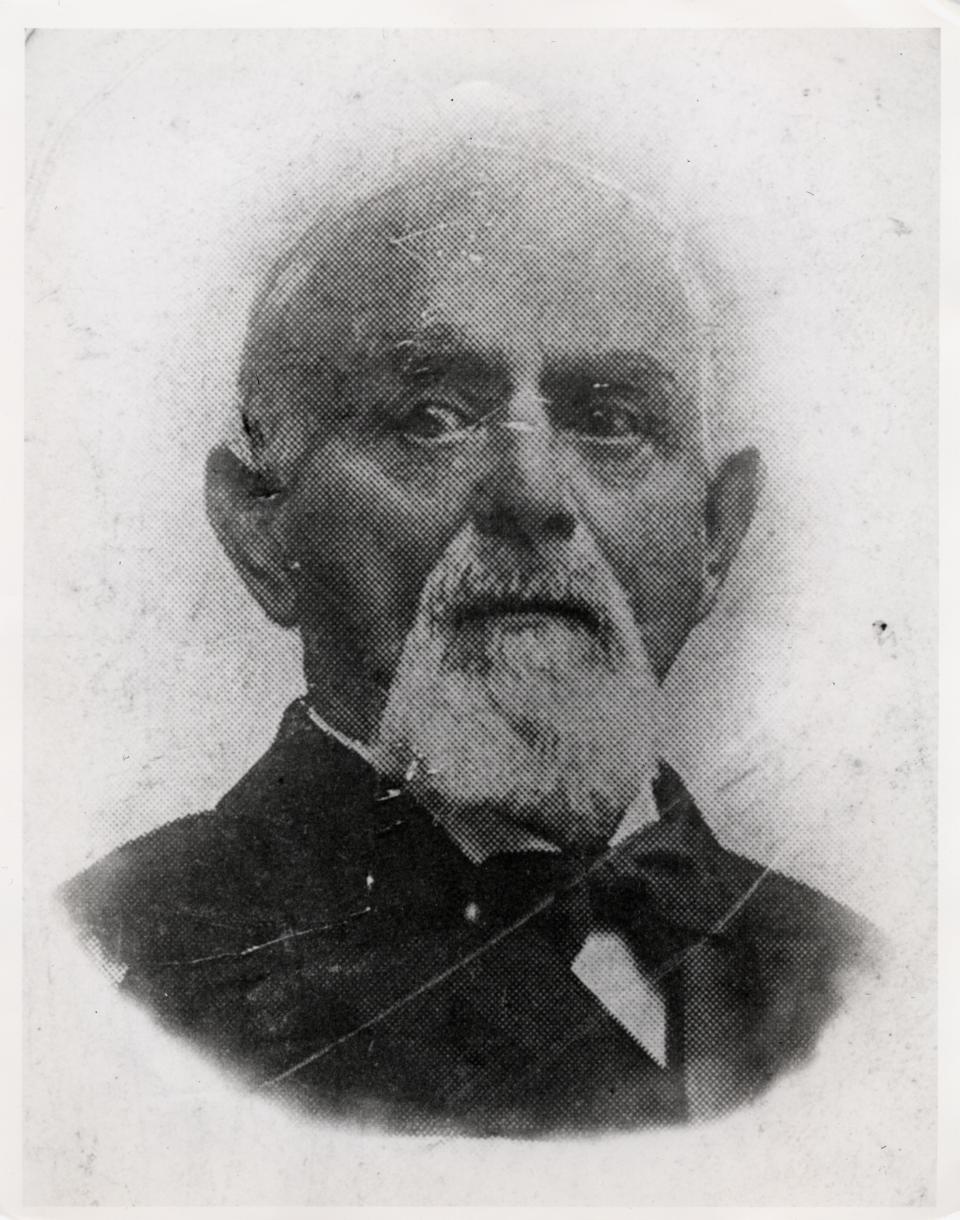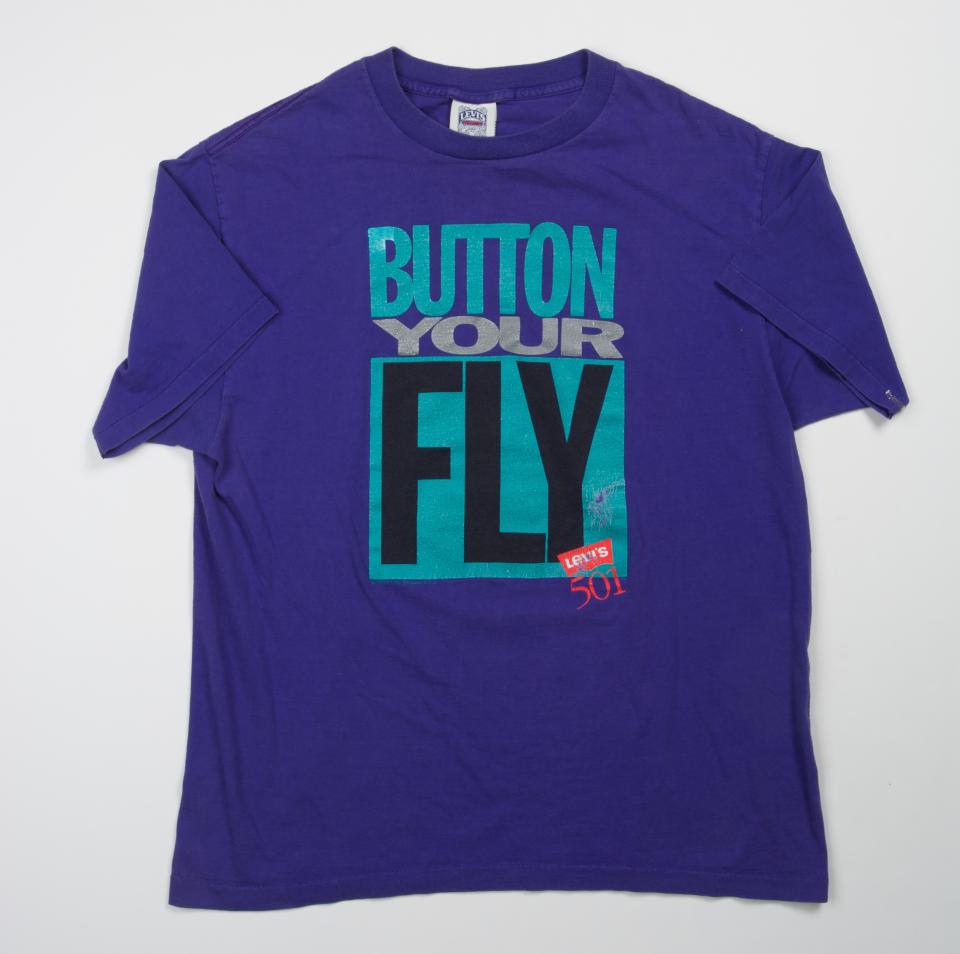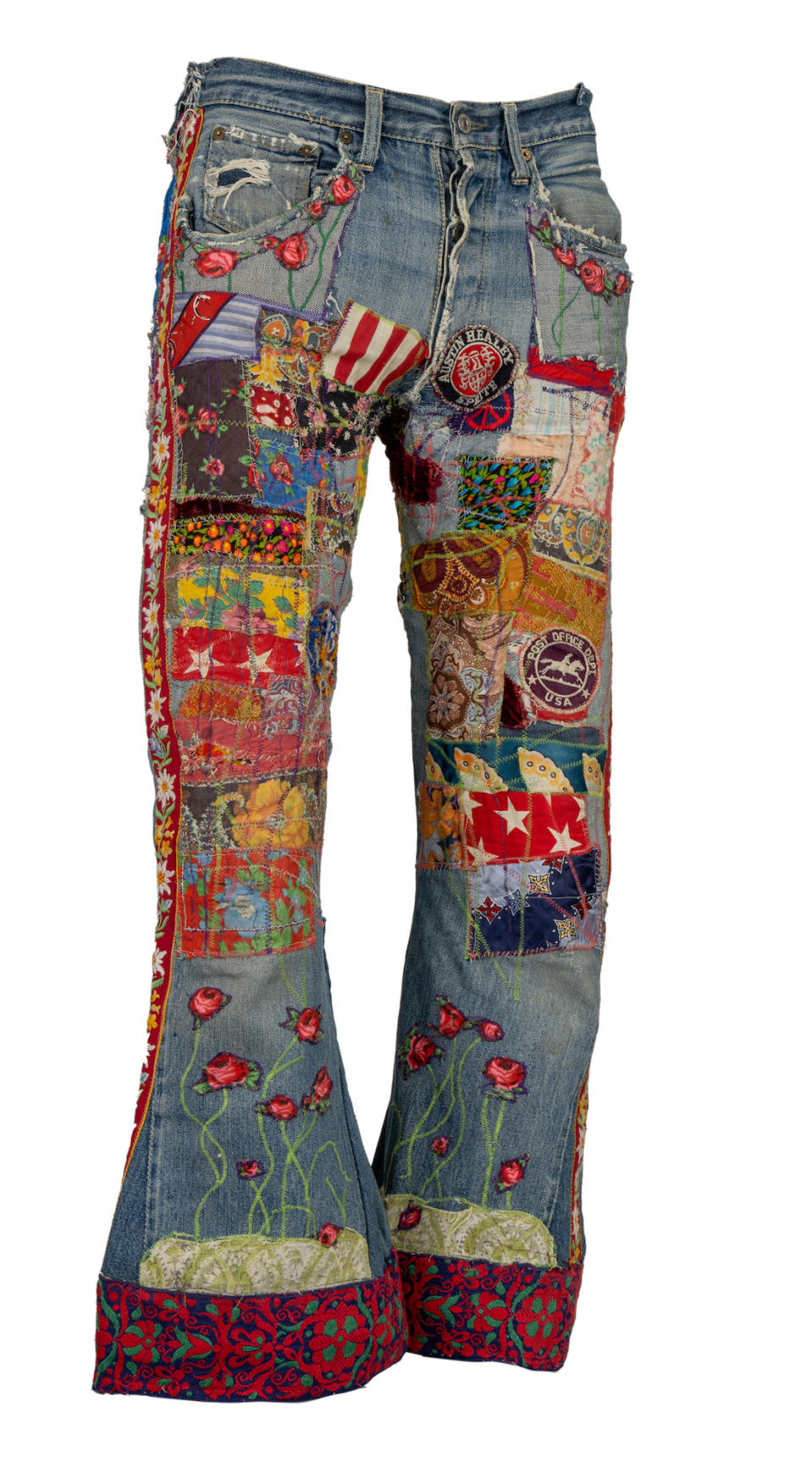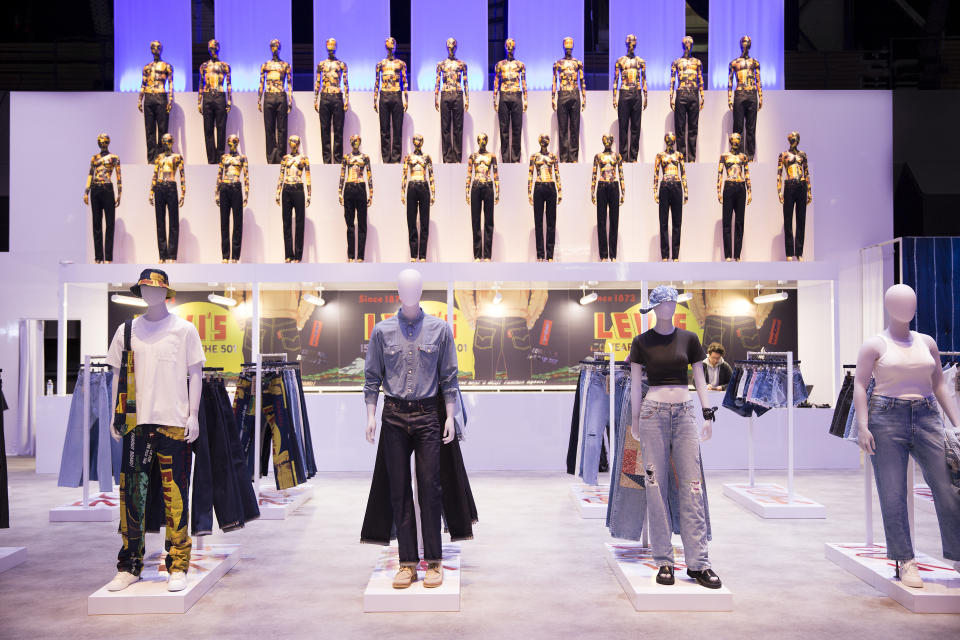Year in Review: Levi’s 150 Years of Riveted Denim
- Oops!Something went wrong.Please try again later.

Billed as the anniversary of the Levi’s 501 jeans, May 20, 2023 marked 150 years since the denim giant and a Nevada tailor, Jacob Davis, received a patent for what they described as an “improvement in fastening pocket-openings.”
“My invention relates to a fastening for pocket-openings, whereby the sewed seams are prevented from ripping or starting from frequent pressure or strain thereon; and it consists in the employment of a metal rivet or eyelet at each edge of the pocket-opening, to prevent the ripping of the seam at those points,” Davis wrote. “The rivet or eyelet is so fastened in the seam as to bind the two parts of cloth which the seam unites together, so that it shall prevent the strain or pressure from coming upon the thread with which the seam is sewed.”
More from Sourcing Journal
The foundational patent would eventually lead to the development of Levi’s 501 jeans. A now-classic style, the 501 served as the blueprint for the jean industry, helping drive it from workwear to everywhere.
Workwear Roots
According to Levi’s historian Tracey Panek, Davis developed the idea for riveted trousers while stitching up a pair of work pants. The design became such a hit, Davis had trouble keeping up with demand, Panek said. The tailor wrote to his fabric supplier, Levi Strauss & Co. (LS&Co.), and proposed they partner on a patent. Davis filed an application with the U.S. Patent Office on behalf of himself and the company in August 1972. Nine months later, it was approved. Levi’s began using the lot number 501 to denote its highest quality jeans 18 years later, in 1890.
“The 501 began as a simple work pant that evolved over time,” Panek said. “Laborers from miners to mechanics first adopted ‘waist overalls,” as they were called. Adverts boasted, ‘Cut Full, Honestly Made, Strong and Durable.’ Full cut meant roomy enough to be worn as a tough outer garment made of ‘XX’ denim, the strongest available. Features included a button fly, suspender buttons and a back cinch and patch.”

Levi’s copper-riveted waist overalls—made originally with duck canvas—went through a series of changes in the early 20th century. By 1901, the company had added a second back pocket—it started out with two front pockets, a watch pocket and a right back pocket— “likely” due to consumer requests or changes in men’s fashion, an LS&Co. timeline claims.
Based in San Francisco, Levi’s rose to prominence in part due to a massive local demand for workwear, Deirdre Clemente, a professor of history of at the University of Nevada, Las Vegas, said. “An incredible distribution method” that bested its competitors allowed it to expand its reach further beyond the city, she added.
“What makes [Levi’s 501s] so interesting is that they’re born of their time,” Clemente said. “That garment is born of its time. It is the incarnation of this massive demographic, economic, industrial changes happening on the West Coast in the early 1900s.”
Profits, however, fell to an all-time low in 1918, prompting company leadership to double down on durability, LS&Co. said. In 1922, it introduced belt loops to the overalls. The cinch remained, but some wearers began cutting it off to wear the pants with a belt. LS&Co. again attributed the update to changes in men’s fashion and the brand’s understanding of consumer demand. By 1925, the improved design had sent profits “skyrocketing,” LS&Co. said.
From the 1930s on, Levi’s 501 jeans became “synonymous” with cowboys, with actors in Hollywood Westerns and vacationers to dude ranches donning the item, Panek said. A 1934 advertisement enforced this association, telling consumers that “The overalls displayed here are genuine Levi’s worn by all cowboys.”
That same year, the company launched Lady Levi’s Lot 701 jeans. The silhouette featured a slim fit and higher waist than the 501. Later in 1936, Levi’s introduced its signature red tab to the right back pocket.
It’s during this period that Levi’s marketing team positions the company to slide into the alternative niche a couple decades later, Clemente said.
“The marketers say ‘There’s only so many jeans we can sell to farmers, so let’s sell them to women,’” she said. “’Let’s sell them to people who like rodeos. Let’s sell them to kids because kids are so horrible to their clothes.’ So this is the ’30s and ’40s setting up for the late ’40s and ’50s.”
During World War II, materials rationing forced Levi’s to make several changes, including using generic stock buttons and rivets, removing rivets from the watch pocket and crotch and painting on the company’s Arcuate symbol.
“GIs during World War II wore the 501 and a white T-shirt overseas when they weren’t in uniform,” Panek said. “On the home front, Rosies who riveted also adopted the 501, but wartime needs necessitated changes like removing the back cinch.”
After the war, Levi’s returned rivets to the watch pocket, but kept some of the recent changes, such as the removal of the cinch and crotch rivet. These tweaks, debuted in 1947, marked the end of the 501’s transition from waist overall to what Panek called the “modern, straight jean.”
Cultural Symbol
Buoyed by Hollywood, blue jeans made the jump from workwear to casual wear in the decades that followed. In 1953, Marlon Brando donned 501 jeans and a leather jacket as the head of a motorcycle club in “The Wild One.” Two years later, “Rebel Without a Cause” cemented James Dean’s blue jeans, white tee and red jacket as a symbol of teenage cool.
Richard Thompson Ford, a professor of law at Stanford Law School, researched centuries of shifting fashion norms and rules for his 2021 book “Dress Codes: How the Laws of Fashion Made History.” Once film became widespread, it played “a huge role” in the development of fashion, even starting in the early 20th century, he said.
“I think it’s pretty rare that film in and of itself invents a fashion trend,” Ford said. “The directors are reflecting something that they see in society. But it certainly spreads a fashion trend, and… ironically, it makes it less specific. So, if you started in “Rebel Without a Cause” with somebody wearing jeans, immediately it tells you this person’s countercultural and rebellious and probably a little bit of trouble. But pretty quickly everyone’s wearing them because they want to look like James Dean and then it doesn’t tell you that anymore.”

By the 1960s, the 501 had become “the choice of youth and counterculture,” Panek said. Hippies cut open the hem to create bell bottoms. Blue jeans were a staple of the civil rights movement and Vietnam protests. Marilyn Monroe wore Levi’s in her final film, 1961’s “The Misfits,” while Bob Dylan donned a pair of 501s for the cover of his 1963 album “The Freewheelin’ Bob Dylan.”
Clemente attributed Levi’s and denim’s post-WWII success to two factors: the emergence of alternative cultures in the postwar boom and the rise of comfort in the American wardrobe. “People had basically two genres of dress and that was stuff they could wear to the barbecue in the backyard and stuff they wore to the office,” she said. Though other brands emerged that specialized in denim, Levi’s size at this point allowed it to dominate the market, Clemente added.
Like a lot of the things associated with the hippies, blue jeans eventually became chic, Ford said. By the 1970s, they’re “no longer really countercultural at all,” he noted.
“They’re kind of evoking a certain part of a countercultural sensibility, but to convey values that have become quite mainstream at that point,” he continued. “It’s become a big part of the American mainstream to be someone who has an idiosyncratic personal style, who has a somewhat oppositional stance to mainstream bourgeois institutions.”

The “irony” is that “very quickly” denim became part of mainstream fashion and eventually high-end fashion with the advent of designer jeans, Ford added. Levi’s, however, remained separate from these shifts, and ultimately made “a big fashion comeback” in the 1980s as the authenticity of the Levi’s 501 became “quite popular,” Ford said.
In 1984, just three years after it rolled out its first 501 jeans designed for women, the U.S. Olympic Team named Levi’s its official outfitter. That same year, Bruce Springsteen released his best-selling album, “Born in the U.S.A.,” with Levi’s signature 501 jeans featured front and center.
By the 1990s, practices like casual Fridays, began to open the door to jeans at traditionally white-collar workplaces. “They needed to be more refined jeans, not faded, not ripped, only on casual Fridays, but this slow process continues,” Ford said. By the late ’90s and early 2000s, wearing jeans with a sports jacket started to become acceptable in certain fields. More recently, in the past 10 to 15 years, denim has begun to become more acceptable even at law offices and banks.
“Now, you wear jeans anywhere,” Ford said. “If you wanted, you could dress up the jeans with a sports jacket. That’s almost formal attire in California at this point. So jeans are kind of ubiquitous.”
The Modern 501
Deemed the “Fashion Item of the 20th Century” by Time in 1999, the 501 has not stopped evolving in the new millennium. In 2003, LS&Co. updated the 501 for the company’s 150th anniversary, balancing and straightening the leg and increasing the bottom opening to half an inch.
Recent years have seen a slew of specialty retro styles harking back to the ’90s and the relaxed fits of that era. In 2019, it introduced a 501 ’93 Straight for men inspired by Levi’s roomier 1993 501 Original. In 2021, it rolled out the women’s 501 ’90s, a looser, roomier, mid-rise jean.
Many of these styles were displayed at the 501 Experience, a popup in San Francisco in May that featured an archive museum, factory, marketplace and opportunities for customization.

The Spring/Summer 2023 season saw Levi’s roll out a wave of retro styles to celebrate the 501 anniversary, including the women’s 501 ’81, a nod to the first 501 it released designed specifically for women. Throughout the fall, the company released a series of limited-edition styles, including a 501 modeled after a pair that was returned by an unhappy customer in 1920.
Speaking with investors in April, president and CEO Chip Bergh, who is set to retire next year, described this year’s 501 anniversary push as the company’s “largest coordinated global marketing campaign.” Kicked off in February at the Grammys with the help of Latin superstar Bad Bunny, the campaign had driven nearly 3 billion impressions worldwide by early April, the executive said.
According to Bergh, first-quarter net revenues were up 25 percent on top of 50 percent growth in 2022. This year, LS&CO. expects 501 sales to approach $800 million, nearly 70 percent higher than pre-pandemic on a reported basis, he added.
“After all these years, love for the 501 has only grown and continues to experience exponential growth, a solid proof point of the strength of the brand,” Bergh said.

